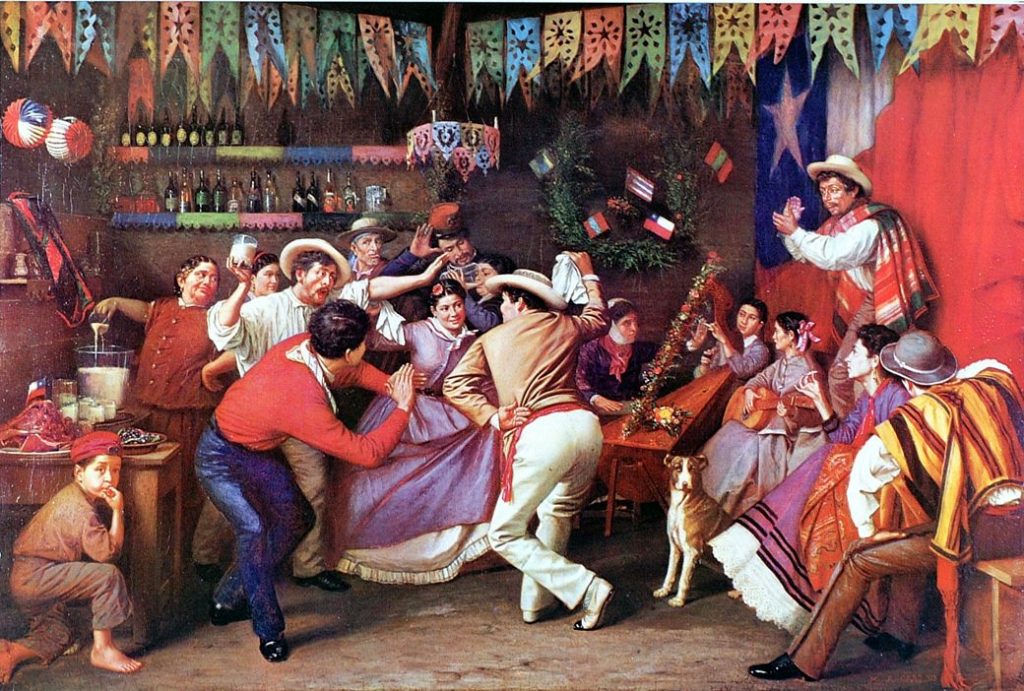
The Zamcueca painting is known for having established a central Chilean identity in the form of art. Completed nearly 60 years after Chilean independence was achieved, the painting represents a turbulent time in the world of art development in Chile. As noted by Dr. Schell in Relics and Selves: Iconographies of the National in Argentina, Brazil, and Chile, art was very much considered central to the idea of the nation and how it should develop. While many believed that the fine arts should sustain regular government funding and interest, others believed these arts to be exorbitant luxuries inspired by faraway European lands that didn’t deserve such attention in Chile, let alone government funding. It is true that the propagation of fine art in Chile ultimately became relegated to a few members of the elite who would try to forge a national identity from fine art.
This is clearly reflected in the Zamcueca painting, as national symbols are prevalent in many parts of the painting. The walls are adorned with the Chilean flag, for instance. It can clearly be seen in a wreath of other Latin American flags, representing the national sense of brotherhood desired by the painter and those within in his social circle. The atmosphere is, quite noticeably, authentically Chilean. The gathering in a rural tavern is jovial and lively, representing an optimistic vision of the Chilean people, proud of their nation and their place in it. Despite the temporal distance between the completion of this work and Chilean independence, the national spirit is just as vibrantly reflected in this work. That being said, it’s European stylings reflect the elitism that surrounded this fine art movement. Though these works were exhibited and a local art market was developed, it rarely included members of the lower and middle classes despite the subject matter. The theme of this painting is very much original in nature, and speaks to the already growing stratification of the elites in Chilean society.
Works Cited
Schell, Patience A. Relics and Selves: Iconographies of the National in Argentina, Brazil and Chile, 1880-1890, University of Manchester, www7.bbk.ac.uk/ibamuseum/texts/Schell02.htm.
“Biography of Manuel Antonio Caro.” TheBiography.us, The Biography.us, thebiography.us/en/caro-manuel-antonio.
Image Link: https://es.wikipedia.org/wiki/Zamacueca#/media/Archivo:Zamacueca-Chile.jpg
